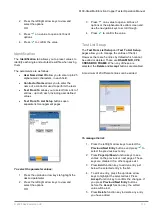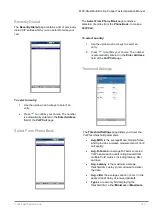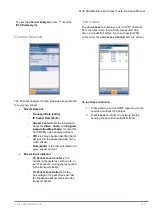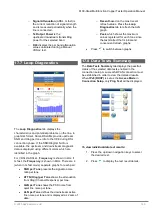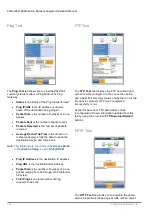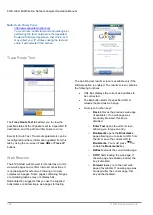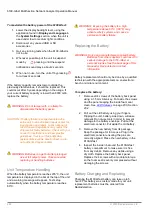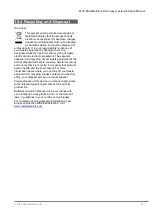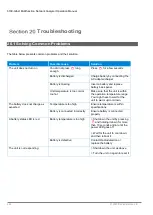
6100-Gfast Multifunction Copper Tester Operation Manual
© 2020 Radiodetection Ltd
187
Bitswap
specifies the status of the bit
swapping mechanism -
Active
or
Not Active
-
swapping bits from tone m to tone n to prevent
modem retraining.
Trellis
or Trellis Coded Modulation (TCM) is a
type of convolutional code which utilizes parity
bits on each symbol within a continuous data
stream. When the line is connected, Trellis
displays either
On
or
Off
.
Phy-R
is Broadcom proprietary Physical Layer
Retransmission technology which is used to
overcome impulse noise.
G.INP
is the standards based Physical Layer
Retransmission scheme for impulse noise
protection and will report
Active
or
Not Active
.
G.INP
state will be shown unless system is using
Phy-R
.
DSL
Statistics
The
DSL Statistics
tab allows you to view transfer
mode statistics and DSL counters.
When the
Test Interface
for
Auto Test
or
Manual
Test
is set to ADSL2+ or VDSL2 bonding mode,
there will be 2 pages of results, one for each DSL
line-pair.
To access the second-pair results, press the
Pair 1
/
2
function key at the bottom-right of the
screen.
DSL Counters
lists the
Local
and
Remote
results for the following counters:
o
CRC
is the cyclical redundancy check
Interleaved/Fast counter.
o
FEC
is the Reed Solomon forward
error correction.
o
Errored Seconds
is the number of
seconds when code violation is
detected.
o
HEC
is the header error check (HEC)
Interleaved/Fast counter. Available
only in ATM connection mode.
o
SES
(severely errored seconds) is the
count of a one-second period that
contains >30 % errored blocks or at
least one severely disturbed period.
Parameter - Received/Transmitted
o
Bytes
records the number of active
(non-idle) PTM/ATM cells or frames on
a channel.
o
Packets
displays the number of
packets.
DSL Transport
options include
PTM
(packet
transfer mode),
ATM
(asynchronous transfer
mode), and
ATM/PTM
.
Sync loss count
is the number of times the
unit lost synchronization.
Vector State
for single VDSL2 connection
mode is
Active
/
Not Active
and for G.fast
mode is always
Active
. When
Active
, the VCE
(vector control entity) + DSLAM asks the CPE
for noise samples. The VCE uses the noise
samples to calculate the level of FEXT (far end
crosstalk) and to calculate the solution to
mitigate the effects of FEXT.
KL0
displays the attenuation that the system
calculated during the determination of UPBO
(Upstream Power Back Off) requirements as
an estimated electrical length of its loop.
EWL
is the estimated wire length and is based
on the
KL0
.
Rate Adaptation
mode displays the following
in Manual and Auto Test:
o
SRA
(seamless rate adaptation) which
adjusts the rate according to the
current line conditions. Received and
transmitted counters are shown, for
example SRA(DS/US).
o
FRA
(fast rate adaptation) which
enables rapid (<1 ms) reconfiguration
of the data rate. Received and
transmitted counters are shown, for
example FRA(DS/US).
o
N/A
means none used.

